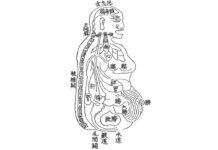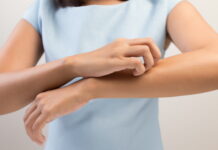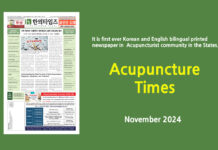
By Winston Lee L. Ac, Ph.D, KMD
When you visit the hospital for treating chronic low back pain, you have a chance to be diagnosed with scoliosis along with other disc-related diagnoses.
According to the National Scoliosis Foundation, Scoliosis affects 2~3 percent of the population or an estimated six to nine million people in the United States. And every year, scoliosis patients make more than 600,000 visits to private physician offices, an estimated 30,000 children are fitted with a brace, and 38,000 patients undergo spinal fusion surgery.”
If one is in adolescence and has low back pain, chances will increase. As reported by a research article, “Prevalence and management of back pain in adolescent idiopathic scoliosis patients: A retrospective study, “Spinal asymmetry or scoliosis is a major risk factor for back pain in adolescents.”
Scoliosis is a sideways curvature of the spine that occurs most often during the growth spurt before puberty. While scoliosis can be caused by conditions such as cerebral palsy and muscular dystrophy, the cause of most scoliosis is unknown. Signs and symptoms of scoliosis are uneven shoulders, one should blade appears more prominent than the other, uneven waist, and one hip is higher than the other.
Among patients with scoliosis, their back is bent in an S-shaped shape, and the height of the pelvis or shoulders is different, or the torso is skewed to one side.
People tend to spend a lot of time sitting position throughout the day, and their spine is easily bent due to incorrect postures or personal habits. If the spine is bent laterally by more than 5 degrees, it is considered abnormal, and it has been reported that about 7.7% of the population has scoliosis.
If the height of both shoulders is different when standing upright, or when looking from the back when the waist is bent, one of the backs is raised, you may suspect scoliosis.
In the early stage of the symptom, pain, or subjective symptoms do not appear, so others often discover them without knowing. For more accurate judgment, an X-ray examination can be used to confirm that the spine is bent visually. As scoliosis progresses, the muscles, ligaments, and nerves around the spine are compressed, so symptoms such as back pain, stiff shoulders, and headaches may appear. When it is severe, the spine, ribs, and pelvis are deformed, compressing the heart and lungs, causing abnormal cardiopulmonary function.
Neurologically, hormonal and digestive imbalances are also considered as a cause, especially among adolescent patients. It may lead to allergies, concentration disorders, and growth disorders.
Then, how to improve or treat scoliosis?
Even if you have scoliosis, you can prevent the symptoms from getting worse by correcting posture and lifestyle. Walking is recommended as a simple prevention and exercise method in life. Walking is the simplest exercise method that has few side effects and is effective.
A desirable walking posture is to raise the head, keep the chin inward, increase the stride, and swing the arms wide. It is good to keep the posture while touching the ground with the toes, lifting the heels, and taking a quick walk. The walking pace should be maintained at high speed of 30 to 40 minutes, just before gasping. It is also a good idea to hold a 1 lb in both hands.
In conventional medicine, doctors often recommend wearing a bracelet if the patient is a baby or adolescent. Wearing a brace will not cure the symptom, but it prevents further progression of the curve.
If scoliosis continues to progress and the degree reaches 20˚~40˚ and growth remains for more than one-year, conservative treatment such as acupuncture treatment is recommended. Also, sessions of chiropractic treatment are working well as acupuncture sessions. These treatments relieve tension in the muscles around the spine, balance the spine, and correct the spine’s alignment. Also, herbal medicine helps with acupuncture treatment by releasing tensed muscles and ligaments. I believe that the best acupuncture points and herbal formula for the symptom are not fixed. There is no single cause to make scoliosis. The best formula for the symptom is the formula that helps strengthen a patient’s muscles, ligaments, and tendons that are physically supporting backbones in the right position. Taking herbal medicine for a spinal disorder is intended to prevent recurrence by strengthening the muscles and ligaments. In this case, since exercise is also essential, the patient’s continuous effort to do physical activity in daily life is required.































